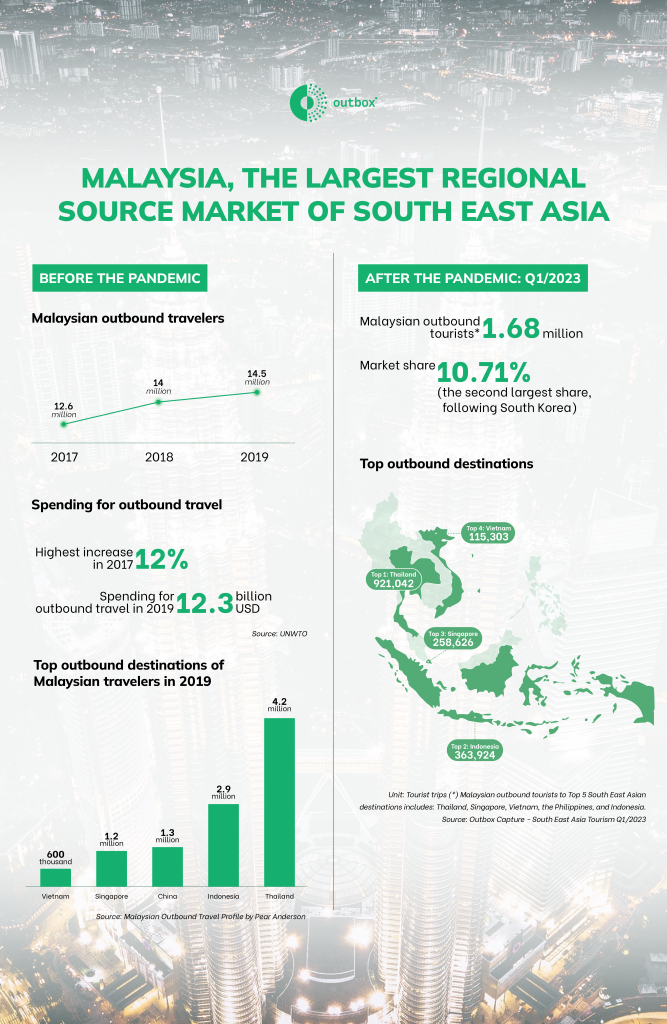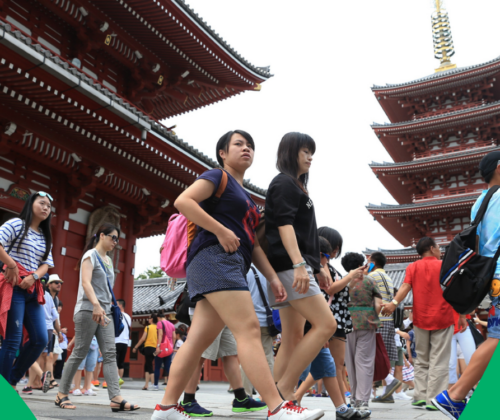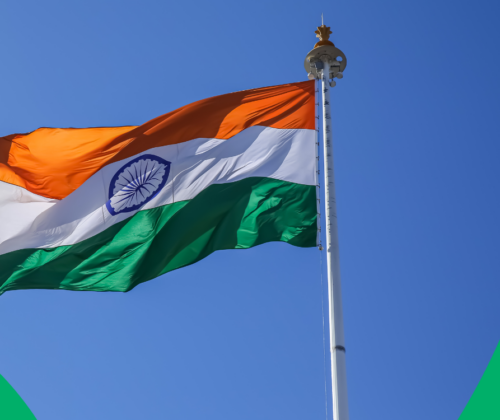According to the latest Outbox Capture, in the first quarter of 2023, Malaysia was the second largest source market of five South East Asian destinations, following only South Korea. In the top international tourist markets of the region, China, Korea, the US or India are often listed. The Malaysian market does not seem to be mentioned or exploited much. However, the market is showing its significant potential and position for the South East Asian tourism industry.
Malaysian outbound market growth: Not fast but steady
Before the COVID-19 pandemic, demand for outbound travel of Malaysian people was constantly increasing. According to UNWTO, in 2017, there were 12.6 million Malaysian outbound travelers. It increased to 14 million in 2018, and reached 14.5 million one year later. Although the number of outbound tourists from this country did not increase rapidly, it is considered to increase steadily.
Malaysian tourists’ spending on overseas trips has also increased year on year. The highest increase was 12% in 2017. By the end of 2019, the spending for outbound travel of the market reached more than 12.3 billion USD.
The top international destinations of Malaysian tourists are mainly in Southeast Asia. Before the pandemic broke out, in 2019, Thailand received the most Malaysian visitors with 4.2 million arrivals, followed by Indonesia (2.9 million). China welcomed 1.3 million visitors, Singapore tied with 1.2 million Malaysian visitors. Vietnam was the last one in the top 5 with more than 600,000 visitors, according to the Malaysian Outbound Travel Profile by Pear Anderson. Malaysian tourists especially like Southeast Asia when traveling abroad. It is still one of their notable behavioral characteristics up until now.
The Malaysian market in Q1 2023: SEA destinations remain top choice
In the first 3 months of 2023, when the key Chinese market had not really returned, based on data from the National Tourism Departments, there were more than 1.68 million Malaysian outbound tourists to 5 South East Asian destinations (including Thailand, Vietnam, Singapore, Indonesia and the Philippines). It accounted for 10.71% of the total market share of the top 5 source markets in 5 countries, and was approximately the share of the largest market, South Korea (11.74%).
Malaysia was the largest inbound market of Thailand and Indonesia, ranked in the top 3 largest source markets of Singapore and ranked 7th in Vietnam in Q1.
In South East Asia only, Thailand was the most attractive destination for Malaysian tourists in the first 3 months of the year with 921,042 visitors. Following was Indonesia with 363,924 visitors. Singapore ranked 3rd in the destinations chosen by the most Malaysian outbound tourists (258,626 arrivals). Vietnam received 115,303 visitors from this market.
More attention needed
Currently, although Malaysia is holding a large market share in South East Asia, it seems that the market has not been focused. There have not been a lot of tourism products, services, and programs dedicated to the Malaysian market.
As mentioned above, whether before or after the pandemic, Malaysian tourists always have a high demand for outbound travel, and love Asian destinations, especially those in South East Asia. So, instead of trying to tap into remote markets, why don’t we focus on close and potential markets like Malaysia? If being well understood, responded to and exploited, Malaysia is likely to become a much larger source market than it is now.




